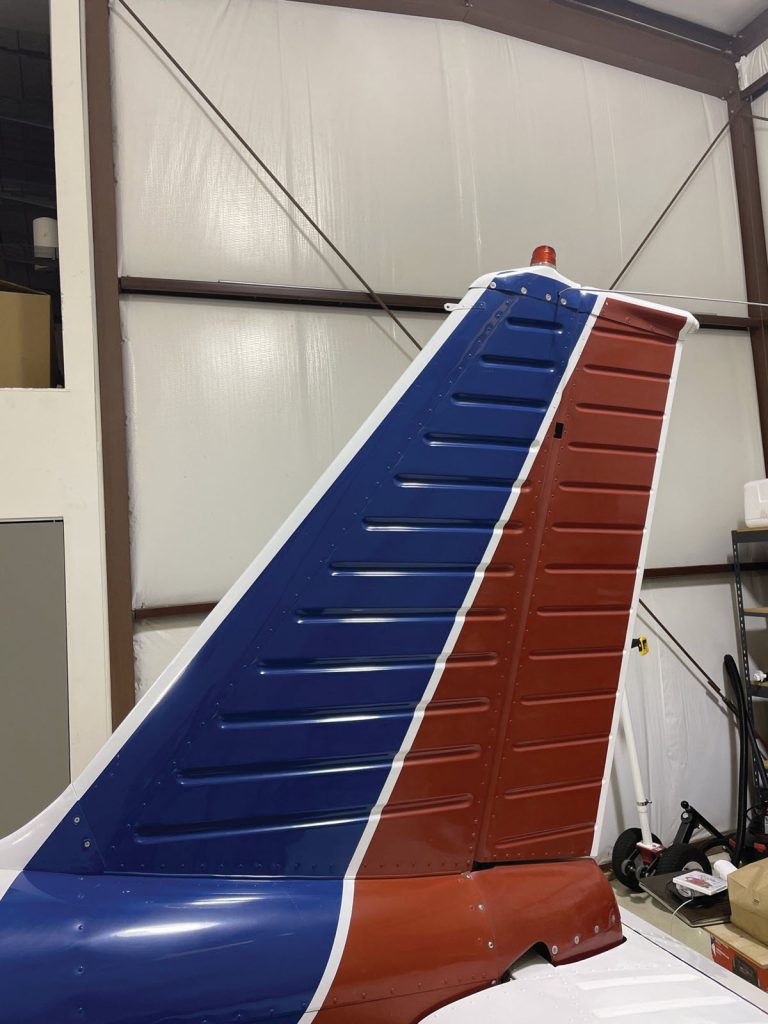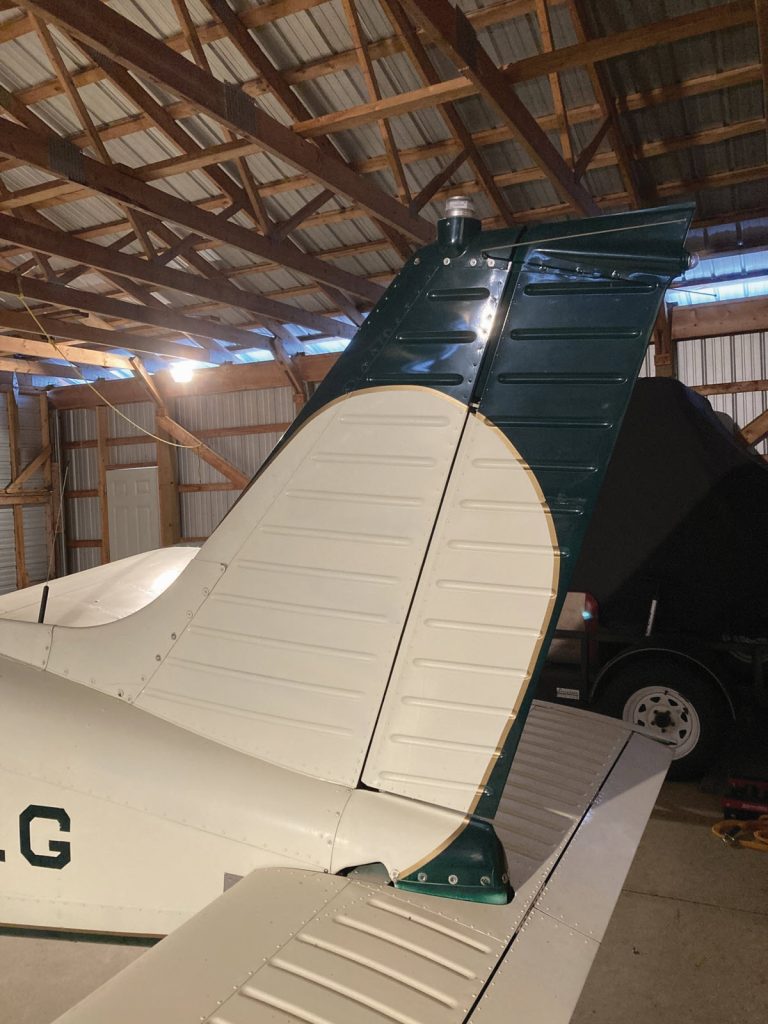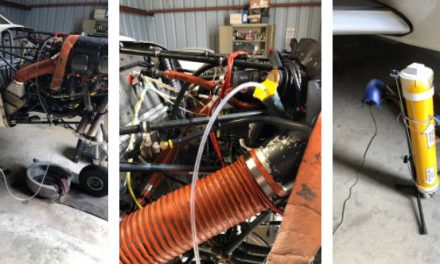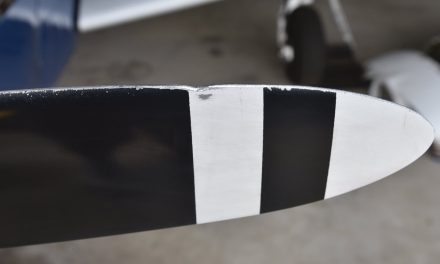Advice from other Owners
Q
Hey, all. I’ve got a ‘67 180C. It’s got an updated Whelen tail beacon adapted over the original rotating Grimes rotating base. I look at that giant round base on top of the tailfin and it just offends any aerodynamic sensibilities I have, especially when Knots2U sells very reasonably priced replacement fin caps. At the very least, I’d want to replace with one with a much smaller beacon base and install a low-profile LED, but what I’d really like to do is remove the whole thing altogether and do a nice, tapered fin cap with no mounting flat.
I plan on replacing the standard old wingtip position lights with combo LED lights and strobes (which hopefully also lets me get rid of the belly strobe as a bonus).
Would I be able to do this, maybe with a 337? I just saw an older series (two side windows like mine) Cherokee that seemed to have exactly this at my local airport.
—paul45c
A
I have a Whelen tail beacon LED strobe. Rewired wings and changed to Horner wingtips with Whelen Orion 600 LED nav light / strobes. 1972 PA-28-140.
—CherokeeCF-BLG
A
Here is a low-profile AeroLED light that describes a simple logbook entry vs. a 337. [Learn more by downloading a PDF at piperowner.org/sep22. — Ed.]
—Eric Panning
A
Based on your comments, I’m guessing I still have to retain a tail beacon of some kind? I was really hoping I’d be able to ditch it altogether, based on that old Cherokee I just saw.
—paul45c
A
Let’s be brutally honest. You are not going to gain anything but a smaller bank account. Upgrading it to LED is a worthwhile investment in visibility but removing has no perceived advantage and actually reduces your “see and avoid” footprint. If it were legal to remove, I would not.
—Unit74
A
Respectfully, I see a perceived advantage in any reasonable drag reductions I can make in the name of decreasing fuel burn/increasing range. I’m no speed demon since I bought (and love) my Cherokee, but modest reductions in drag can have a real effect on range, which brings me to perhaps my biggest aim — the safety of having more reserve fuel in the tanks for unanticipated diversions in VFR conditions. I think we can all agree that the basic PA-28 is a pretty draggy airframe, but there are opportunities to improve this. Your caution about safety/visibility is well-taken, though, Unit74.
—paul45c
A
And the other issue is that we aircraft owners, like car owners, love to customize our planes and make them better. We’re going to spend some money on that just because we want to, not because it makes any financial sense.
—Scott Sherer, Piper Owner Society Aviation Director
A
I suppose we all love to tinker and “make it ours.” I tend to look only at the practicality when spending money on a plane though. I don’t see the practical reason on that plane unless you are going with a full package of speed mods.
—Unit74
A
For what it’s worth, I do anticipate doing most of the speed mods available in the next year or so. But Scott’s certainly right about part of my motivation — some things just offend my eye. Look at those flap hinges, for one — you know there had to be engineers at Piper that probably wanted to do something a lot better (and easily could have), but the bean counters said, “Ah, it’s fast enough … and look how cheaply we can stamp out those steel u-channels.” Ugh. And yes, that tail beacon … the size of a coffee can. Really? Drive even 70 mph down the interstate with a coffee can held out the window and feel the wind resistance. Now dial that speed up almost double for my airplane. So yes, I’m going to go with one of the nice modern low-profile LED beacons and replace the rudder cap with one that has a correspondingly small base.
To illustrate where I’m trying to go with less fuel burn and more reserves in the tank, my plane has a book cruise of 144 mph with my 180 hp; the 235 from the same year has a book cruise of 156 (almost the same exact airframe, little beefed up in the tail, 180 pounds more weight). So 55 hp more, maybe 3-4 more gph, to achieve a 12 mph increase. We all know it takes a lot more hp to earn a little more speed. Conversely, if my drag reductions can let me achieve similar speeds to what I get now at 75% at 10+% less throttle, that’s a big winner in my book. The 180 doesn’t have a lot of tank.
—paul45c
A
A
One good headwind, and you can go back to square one on drag reduction. I did replace the mechanical tail beacon with a strobe and slim fairing from Knots2U on my 1966 180C. (See photo at right.)
— Mike Jones
A
That looks like the Aeroflash. I had one on my Archer.
—Unit74
A
My A&P permitted me to install the Whelen 360 beacon on my Warrior, and he signed off on the work. It was not that difficult to do. You can just bypass the strobe power supply but use existing wiring for the installation. On the Warrior, it was just a straight replacement of the beacon, and I used the original fin cap. It is polarity sensitive, so you need to double check that carefully with your voltmeter before you plug it in. I removed the strobe supply, weighed it, and measured arm, and my IA did a revised W&B. I still have the old power supply.
—kentshaw
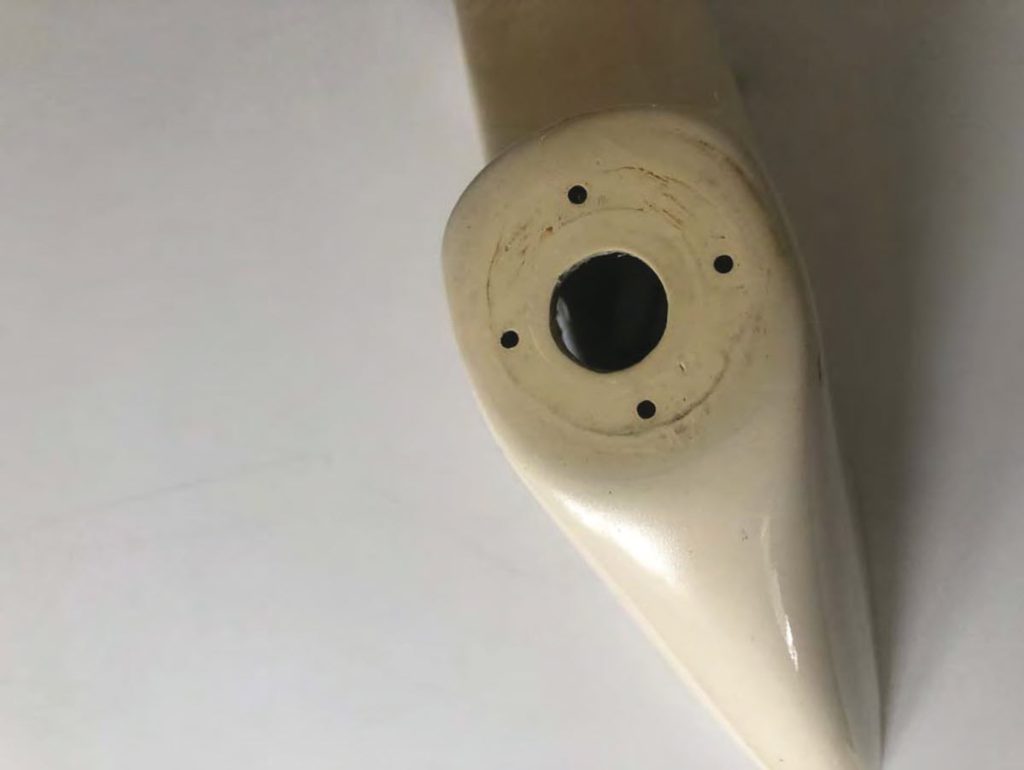
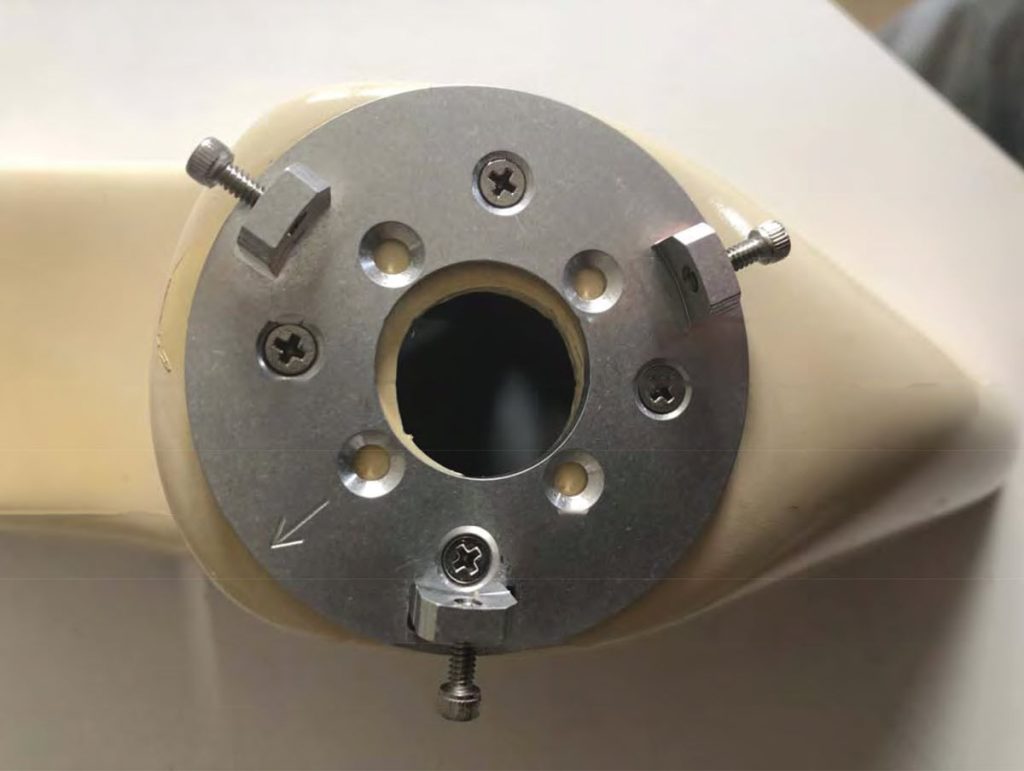
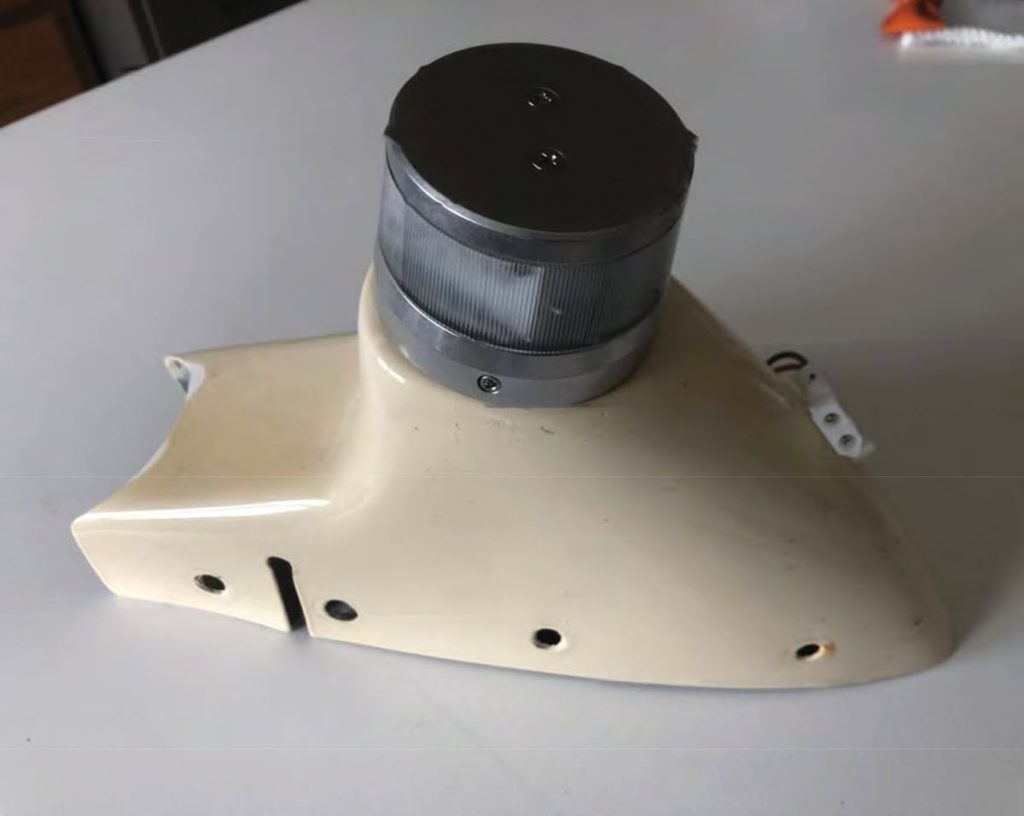
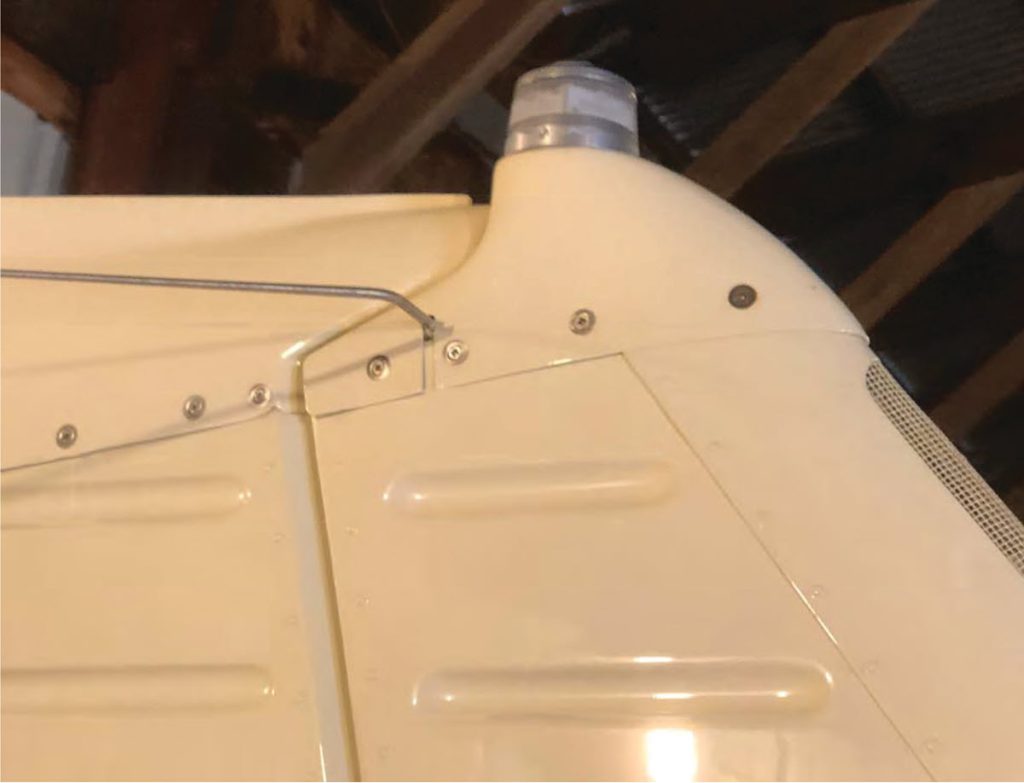
A
If you already have a reduced-size fin cap and an Aeroflash beacon, the comment is right. Your mechanic (and you) might want to install the AeroLED low-profile unit. Not really aerodynamic looking, but considerably smaller. Probably not at all worth it if you think it is going to help much on a 180. Remember I believe a permanent W&B update must be done by an A&P, that is not a pilot function, and it is definitely required.
—Pistoll7
A
I did remove the tail strobe beacon on my PA-28-236, replaced it with a WAT Orion LED beacon, used the same wires, bypassed and took out the strobe power pack, A&P revised W&B, log entry, etc. I like it a lot. Lower power requirement but didn’t notice any change in speed.
—akattamu
A
I did exactly what Paul45c was asking about. My strobe was misbehaving, so we spent $300 in labor and parts to fix it. It still misbehaved, flashing only when it wanted to. I also didn’t care for a coffee-can sized wind catcher there and asked a local A&P about simply eliminating it by adding the smooth cap on top with a different flashing strobe on the trailing edge of the rudder.
I’m very glad we did that. Sure, it cost more, but not a lot more. It turns out the rudder’s light socket was getting pretty sketchy, so the timing was perfect. The visibility is great, the wiring is up to snuff, weight dropped a few pounds (2.2 from memory), the LED flasher on the rudder should last the life of the plane, and it “feels” faster even though it probably is such a small difference that it’s barely measurable. Best of all, it just looks nicer, especially since the paint match on the new part was perfect. The only regret was trying to fix the old strobe. That money was wasted.
—jimcurns
A
My strobes always took a few minutes before they would start flashing on the ground. They worked fine once the engine was started. I always suspected that the power supply had a tired capacitor that needed to be replaced. There is a TV/radio repair place that seems to specialize in repairing the Whelen power supplies and has made a bunch of YouTube videos on the repairs. Very interesting to watch.
—kentshaw
A
This is the Whelen Orion 360 LED tail beacon (above). I replaced my non-functioning Grimes factory original rotating beacon on my 1972 PA28-140 with this “drop in” replacement. No wiring changes or fairing modifications required.
—Bob
A
It appears to have come from the factory that way and never had a beacon. There is no mention of beacon work in the logbooks, and no 337. It does not have a white light on the rudder or vertical stabilizer, either. Instead, the wingtip lights have the rearward facing white light as part of the nav / strobe assembly.
I dug a bit into beacon requirements in order to understand how to properly work collision avoidance lighting in my beacon-less plane. I will need a better expert to correct me here as it does not seem that there is actually a beacon requirement.
Naturally this is not a statement that removal of an existing beacon is paperwork-free, but just an observation that there are planes out there that do not have this feature, and they are apparently legal for IFR, too.
—jacobsja
A
Well, that is interesting. Let’s see what the current FARs say for Day VFR: 14CFR 91.205(b)(11) “For small civil airplanes certificated after March 11, 1996, in accordance with part 23 of this chapter, an approved aviation red or aviation white anti-collision light system. In the event of failure of any light of the anti-collision light system, operation of the aircraft may continue to a location where repairs or replacement can be made.”
And 14CFR 91.205(c)(3) Night VFR: An approved aviation red or aviation white anticollision light system on all U.S.-registered civil aircraft. Anticollision light systems initially installed after August 11, 1971, on aircraft for which a type certificate was issued or applied for before August 11, 1971, must at least meet the anticollision light standards of part 23, 25, 27, or 29 of this chapter, as applicable, that were in effect on August 10, 1971, except that the color may be either aviation red or aviation white. In the event of failure of any light of the anticollision light system, operations with the aircraft may be continued to a stop where repairs or replacement can be made.
The requirements for IFR include the requirements for VFR, 14CFR(d)(1): “Instruments and equipment specified in paragraph (b) of this section, and, for night flight, instruments and equipment specified in paragraph (c) of this section.”
The tail lighting, or other approved alternate means of compliance with the illumination coverage standards specified in whichever regs cover your year of certification, is part of the required anti-collision lighting system. Illumination coverage is complicated. [Visit piperowner.org/sep22 to download a PDF from the FAA dated 1981 to learn more about requirements.]
The date of your aircraft certification would dictate which of these requirements for airworthiness applies. You might wish to run this by your A&P for their advice. If you do, please share!
—Mike Jones
Disclaimer: We provide help to our members with maintenance questions, but since every plane problem is unique and we are unable to visually inspect your plane, we advise you to consult your A&P/IA.

